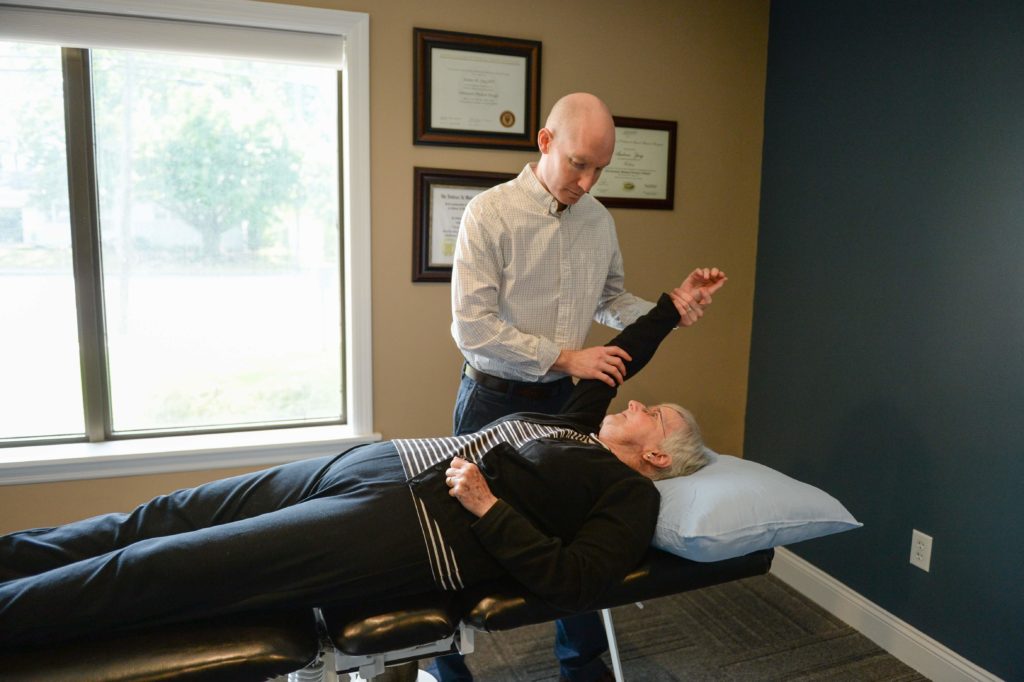A common question asked by individuals with shoulder pain is do I have a frozen shoulder? The next question is often, can a frozen shoulder be fixed? There are several key elements a person who has shoulder pain has that leads to suspicion of a frozen shoulder.
Let’s begin this discussion with a typical profile of a person with a frozen shoulder. This individual is more commonly a female between age 40-60 years old. This does not mean men or people of other ages do not get it, but that this group is most common. Next, various medical conditions such as diabetes in particular are associated with this condition.
A frozen shoulder (or adhesive capsulitis in medical terms) is usually self-limiting meaning it develops, gets worse, then eventually will get better. Typically, invasive medical interventions such as injections or surgery are not required. A person typically develops pain without reason. Often this early pain only happens with certain movements of the arm. Over time the pain may increase to the point of happening when the person is sitting around doing nothing with their arms. Then, the person will notice restriction or limitation of their arm/shoulder motion. In fact painful movement becomes the primary issue. This is called the freezing phase, which may last weeks to months. 
The frozen phase will then happen. This is where the person’s motion is most limited for activities of daily living. A person will routinely complain that sleeping at night is uncomfortable or painful. Eventually, after several weeks or months this phase will end. and the person will move into the thawing phase. It is during this phase that the pain will reduce, and the motion will slowly return. It will reach the point where it only hurts to reach to a “certain point”. This entire process may take upwards of a year. It is a process that often wears on people to the point of seeking medical care.
Now back to the beginning; what can be done?
If a person visits a physician (often an orthopedic), they are surely to be offered pain medication and possibly an injection. Injections for frozen shoulders may reduce pain (temporarily) but does not solve the problem. In rare instances, an orthopedic may offer a shoulder manipulation to address the motion loss. This involves being put to sleep in an operating room and the arm getting “yanked” through all motions to “loosen” up the problem. The problem here is when the person wakes that shoulder will be quite painful for days or weeks…and sometimes it does not work. Or worse, a more significant injury happens (rare event).
Most often though people are referred to physical therapy to learn stretching and movements to work their way through this process. This is the safest and best path forward for most individuals. A variety of techniques can be implemented to assist the process of regaining motion and controlling pain. Quite often treatment of the neck and upper back are also included in this process. Treatment via this direction will routinely speed the process for many suffering.
Know someone dealing with this issue (or you yourself)? Tired of the awful shoulder pain? If so, then click this LINK to request more information about how to best deal with a frozen shoulder. What do you have to lose? Fewer days and night in pain…
